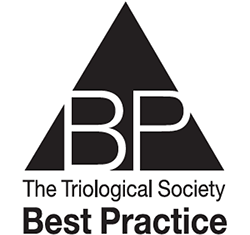 TRIO Best Practice articles are brief, structured reviews designed to provide the busy clinician with a handy outline and reference for day-to-day clinical decision making. The ENTtoday summaries below include the Background and Best Practice sections of the original article. To view the complete Laryngoscope articles free of charge, visit Laryngoscope.com.
TRIO Best Practice articles are brief, structured reviews designed to provide the busy clinician with a handy outline and reference for day-to-day clinical decision making. The ENTtoday summaries below include the Background and Best Practice sections of the original article. To view the complete Laryngoscope articles free of charge, visit Laryngoscope.com.
Explore This Issue
June 2023BACKGROUND
Superior semicircular canal dehiscence (SSCD) is a condition in which an absence of bone overlying the superior semicircular canal leads to both an escape of acoustic energy from the auditory system and inappropriate vestibular stimulation through a third bony window. Auditory and vestibular symptoms include hearing loss, autophony, and sound-induced vertigo. When severe, these symptoms are debilitating and often merit surgical repair with plugging, capping, or resurfacing techniques.
 Traditionally, SSCD repair has utilized a middle cranial fossa (MCF) approach, which provides improved visualization of the dehiscence; however, this technique carries the risks and morbidity of craniotomy with brain retraction (Laryngoscope Invest Otolaryngol. 2021;6:1414–1420). More recently, the transmastoid (TM) approach has been utilized as a safe and comparable alternative; this approach avoids the morbidity of a craniotomy, but it does not allow for direct visualization of the defect (Otolaryngol Head Neck Surg. 2019;161:130–136). Studies have reported a range of outcomes in SSCD symptom resolution, and complications of SSCD repair, when comparing the MCF and TM methods. However, despite existing research, there are currently no widely accepted guidelines regarding which surgical approach is best to minimize postoperative hearing loss in the repair of SSCD.
Traditionally, SSCD repair has utilized a middle cranial fossa (MCF) approach, which provides improved visualization of the dehiscence; however, this technique carries the risks and morbidity of craniotomy with brain retraction (Laryngoscope Invest Otolaryngol. 2021;6:1414–1420). More recently, the transmastoid (TM) approach has been utilized as a safe and comparable alternative; this approach avoids the morbidity of a craniotomy, but it does not allow for direct visualization of the defect (Otolaryngol Head Neck Surg. 2019;161:130–136). Studies have reported a range of outcomes in SSCD symptom resolution, and complications of SSCD repair, when comparing the MCF and TM methods. However, despite existing research, there are currently no widely accepted guidelines regarding which surgical approach is best to minimize postoperative hearing loss in the repair of SSCD.
BEST PRACTICE
MCF and TM approaches to SSCD repair are effective approaches that result in acceptable rates of favorable hearing outcomes for patients. Neither technique has a demonstrably high risk of postoperative hearing loss, and patients undergoing either technique should be counseled regarding the risk of mild high-frequency hearing loss as a result of surgery. The choice of technique should be dependent on surgeon expertise and shared discussion with patients regarding the anticipated postoperative course. There is insufficient evidence to evaluate whether SSCD repair should be offered to patients with hearing loss as the sole presenting complaint.